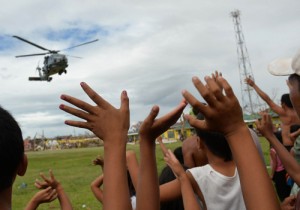The devastation from Typhoon Yolanda in most of the Visayas and parts of Bicol, Mindoro and Palawan highlights the need for a comprehensive re-zoning plan that calls for the retrofitting of land-use laws.
US-trained engineer Mark Sandoval told the Times on Saturday zoning and urban planning programs have to be revisited and adopted to present-day realities.
Sandoval, general manager of Ambitech Asia, one of the leading American engineering companies in the world that just set up shop in the Philippines, said the areas hardest hit by the typhoon are peninsulas surrounded by big bodies of water that are prone to tsunamis and storm surges. The houses in the peninsula, which are heavy at the base but light on the roof and lacks what Sandoval called uplifts, simply are not flood-resistant or cannot withstand savage winds like the ones whipped up by Yolanda.
Sandoval, who has been involved in the construction of high-rise buildings in the US, said the areas are not really suitable for housing or habitation but are best left as “open spaces or park.”
He said “what needs to be done in the near future is massive rezoning and review of actual easements, look at and revise the building and housing codes to make sure that people are located in safer grounds.”
“The Visayas and Mindanao don’t lack space to relocate the houses. It’s not like New York where land is very scarce and we have to make do with what we have.
There are still a lot of spaces to locate our houses and industries,” he said.
Protecting historical sites like ports, airports and churches will cost more because of the need to build super high rise surge walls.
Sandoval said 40 years ago a scientist in Japan set up wall to defend a coastal town from tsunamis. He was ridiculed for going ahead with the project but the wall save the town from the tsunami of 2010.
He said that during the Philippine Economic Society workshop last Friday, even the planning and budget secretaries downplayed the impact of the damage in Yolanda-affected areas to the country’s gross national product.
Those areas depended mainly on tourism and were not manufacturing or agriculture hubs.
Sandoval suggested that the typhoons victims be temporarily housed in tent cities while the devastated areas are rebuilt and manufacturing industries brought in to provide the victims with livelihood.
New factories can be set up in the “restored” areas located on higher and safer grounds to provide people with alternatives to fishing, farming and tourism. This way, these areas can contribute significantly to the GNP, he said.
Sandoval finished his masters in construction management in Berkeley and taught in engineering schools.
He ran his own business before joining Ambitech in the US.


